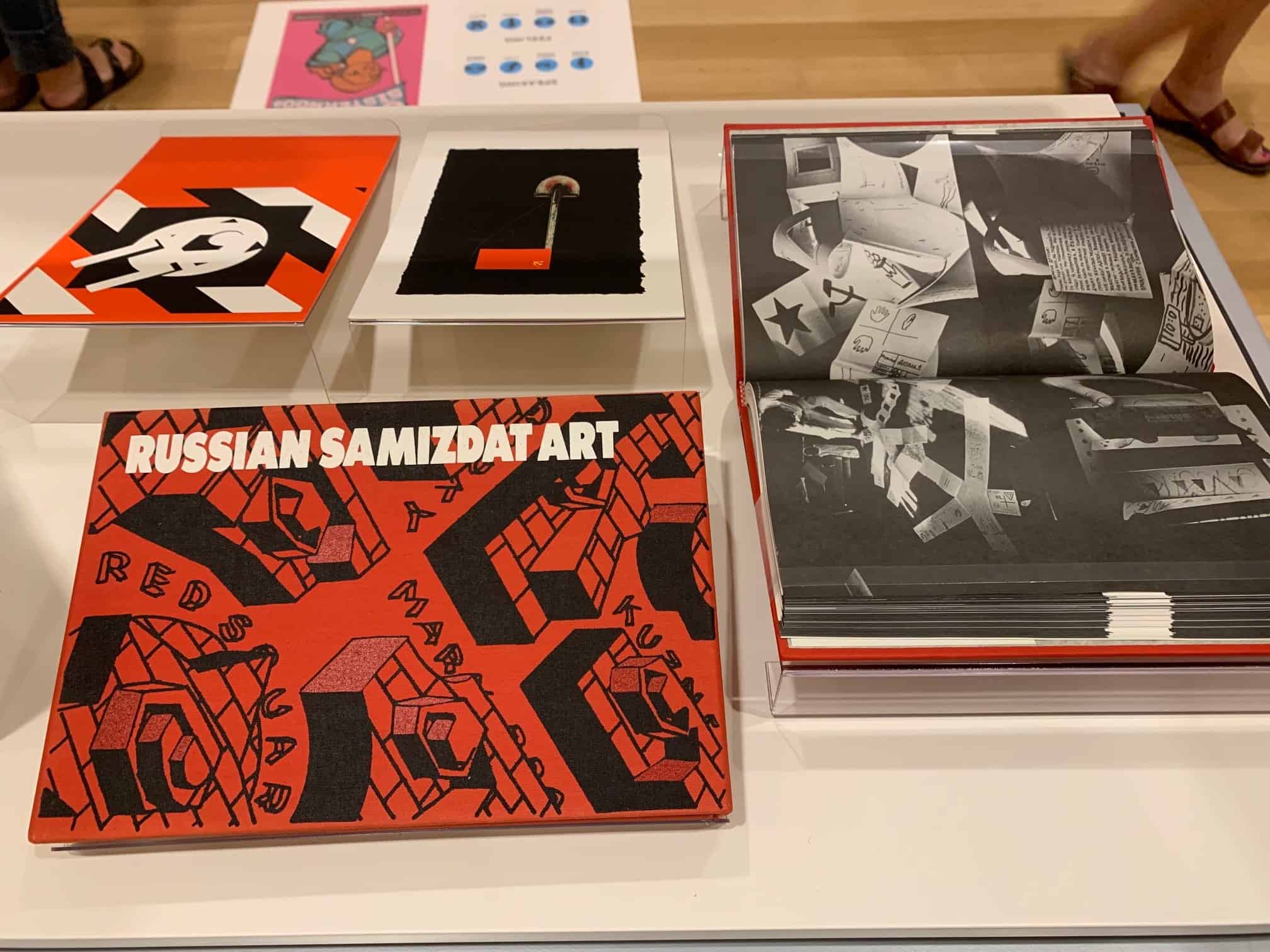When Julia Leonard was approached by the College Book Arts Association (CBAA) about hosting their traveling exhibition, Rising Together: An Exhibition of Artists’ Books, Prints and Zines with a Social Conscience, she knew it would be a great fit for the Main Library Gallery and a meaningful way to connect items from the University of Iowa Libraries Special Collections to contemporary works. She invited Kalmia Strong to co-curate the exhibition, and together they decided to pair select juried pieces from the CBAA exhibition with carefully chosen works from Special Collections. In addition to Special Collections items, they also chose to include zines from the Public Space One Zine Collection.
The exhibition overall features artist books, prints, zines, sculptural bookworks, altered books, chapbooks, broadsides, protest signs and banners, and historical examples of printed dissent. These real protest pieces give activism a visual voice, and comment on politics, power, war, immigration, the environment, human rights, and much more.
Zines
Underground and alternative publishing models have been critical to activists, dissidents, and artists for hundreds of years. One of these methods of publication, the zine, surfaced in the 1930s as way for fans of science fiction to trade ideas, fan fiction, art, and more. In the decades that followed, this type of underground self-publication began to gain a wider appeal.
But what is a zine, exactly? Zines in general are self-published, and typically cheaply-produced, publications which have a diverse history and reach. Their most distinguishing trait is that they are driven by the passions of the maker, whether those passions are political, related to fandom, or are responses to mainstream culture. Rising Together | Protest in Print displays a selection of zines drawn from the Public Space One Zine Collection, which features personal zines, and zines concerning anarchist and radical politics dating mostly from the 1990s and 2000s.
On display:
Strong Hearts, Rod Coronado
Force Fed, Miss Kristie
Chainbreaker, Shelley Lynn Jackson
American Dream: Free Enterprise, Seth M. Ferranti
Sharing the case with these zines are a few examples of Cartonera publications and samizdat. Cooperative Cartonera publications were pioneered by the Eloísa Cartonera collective following Argentina’s 2001 economic crisis, and now are popular through Central and South America and Europe. Cartonera books are made using inexpensive printing methods and feature uniquely hand-painted cardboard covers sources from cartoneros, or cardboard collectors. They usually contain literary texts, some of which are politically oriented. Samizdat was a dissident underground publishing endeavor in the Soviet Union and Eastern Bloc countries following Joseph Stalin’s death. Works protesting the suppression of freedom of expression and other unsavory policies, or works containing material deemed “subversive,” were often produced by hand-copying or by using a typewriter and carbon paper. While most samizdat was written, underground music/audio and visual art were also part of this movement.
On display:
Poesia y Politica: antología de poesía irreverente, Eloísa Cartonera, 2012
Ayotzinapa: Desaparicio Political, Pensaré Cartoneras, 2014
Russian Samizdat Art, Charles Doria, editor; Willis Locker and Owens; New York, NY; 1986
**
Rising Together | Protest in Print is on display in the University of Iowa Libraries’ Main Library Gallery until January 3, 2020. Access to the Gallery is through the Main Library’s North Lobby, and is always free for the campus community and the general public. Visit lib.uiowa.edu/gallery to check open hours.
This exhibition was curated by Julia Leonard, Associate Professor at the University of Iowa Center for the Book and at the School of Library and Information Science; and Kalmia Strong, Creative Coordinator at the University of Iowa Libraries and Program Director at Public Space One, a nonprofit arts organization in Iowa City. Excerpts from the exhibition’s annotated guide to items from the University of Iowa Special Collections were included in this blog post. Stay tuned for additional behind the scenes videos from the curators!
